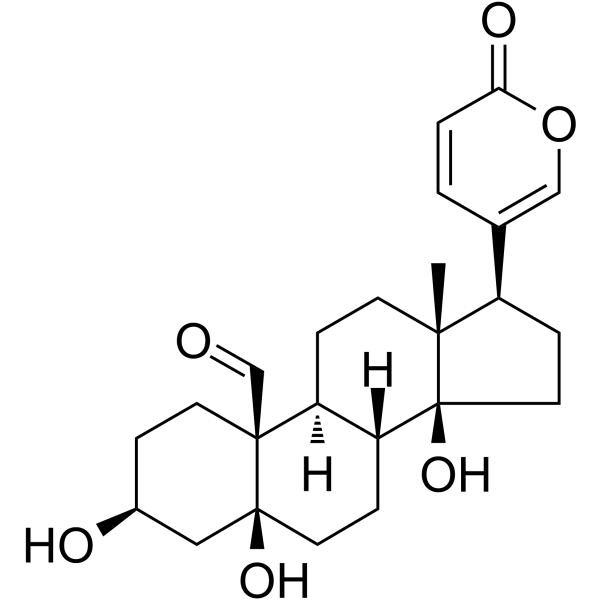
Hellebrigenin
CAS No. 465-90-7
Hellebrigenin( —— )
Catalog No. M31876 CAS No. 465-90-7
Hellebrigenin has anti-hepatoma activities, it induces cell cycle arrest and apoptosis in human hepatocellular carcinoma HepG2 cells through inhibition of Akt.
Purity : >98% (HPLC)
 COA
COA
 Datasheet
Datasheet
 HNMR
HNMR
 HPLC
HPLC
 MSDS
MSDS
 Handing Instructions
Handing Instructions
| Size | Price / USD | Stock | Quantity |
| 5MG | 808 | In Stock |


|
| 50MG | Get Quote | In Stock |


|
| 100MG | Get Quote | In Stock |


|
Biological Information
-
Product NameHellebrigenin
-
NoteResearch use only, not for human use.
-
Brief DescriptionHellebrigenin has anti-hepatoma activities, it induces cell cycle arrest and apoptosis in human hepatocellular carcinoma HepG2 cells through inhibition of Akt.
-
DescriptionHellebrigenin has anti-hepatoma activities, it induces cell cycle arrest and apoptosis in human hepatocellular carcinoma HepG2 cells through inhibition of Akt. Hellebrigenin exhibites moderate to strong activity against human HL-60, SF-295, MDA-MB-435, and HCT-8 cancer cell strains without hemolysis of mouse erythrocytes.
-
In Vitro——
-
In Vivo——
-
Synonyms——
-
PathwayOthers
-
TargetOther Targets
-
Recptor——
-
Research Area——
-
Indication——
Chemical Information
-
CAS Number465-90-7
-
Formula Weight416.51
-
Molecular FormulaC24H32O6
-
Purity>98% (HPLC)
-
Solubility——
-
SMILES——
-
Chemical Name——
Shipping & Storage Information
-
Storage(-20℃)
-
ShippingWith Ice Pack
-
Stability≥ 2 years
Reference
molnova catalog



related products
-
POPS
POPS is a useful organic compound for research related to life sciences. The catalog number is TF0061 and the CAS number is 321863-21-2.
-
3,4,7,8-Tetramethoxy...
3',4',7,8-Tetramethoxyflavone has antioxidant activity.
-
Sulfo-SANPAH Crossli...
Sulfo-SANPAH Crosslinker is a water-soluble isobisfunctional protein crosslinker.



 Cart
Cart
 sales@molnova.com
sales@molnova.com


